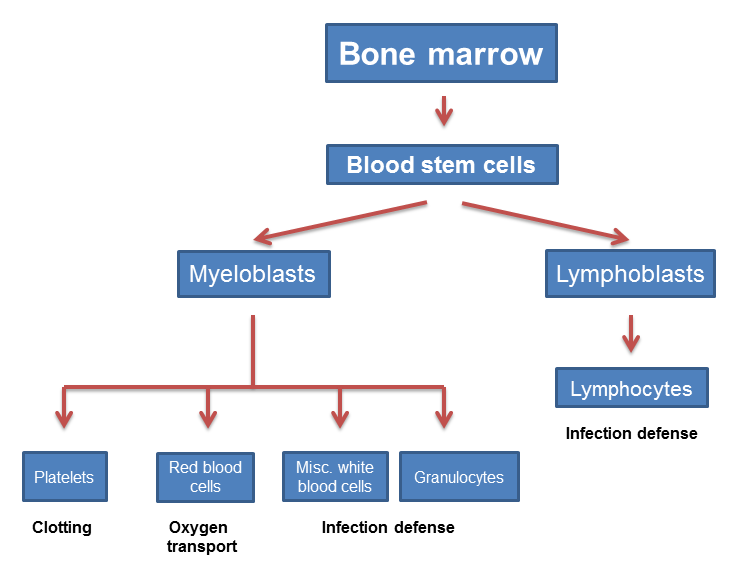Blood malignancy
The bone marrow (spongy tissue inside some bones) is the cradle of the various different types of mature blood cells. All the distinct types of blood cells originate from the haematopoietic stem cells (blood stem cells) in the bone marrow (see Figure 1).

Haematological (blood) malignancies originate in the stem cells in the bone marrow and can be categorised according to the types of blood cells that are affected.
Haematological malignancies that start in the lymphoblastic line and affect the T and B lymphocytes include acute lymphoblastic leukaemia (ALL), chronic lymphocytic leukaemia (CLL), multiple myeloma and lymphomas. Lymphomas mainly manifest in the lymphatic system, in the lymph nodes.
Haematological malignancies that start in the myeloid line and affect the red blood cells, blood platelets and some white blood cells include acute myelogenous leukaemia (AML), chronic myelogenous leukaemia (CML) and some other disorders such as myelodysplastic syndromes and myelofibrosis.
A maxillofacial clinic is not the place for treatment of malignant blood disorders in general but several of the haematological malignancies give rise to signs and symptoms that will be typically investigated in a maxillofacial clinic. In fact, it may happen that such signs and symptoms will lead to a diagnosis of a haematological malignancy initially in a maxillofacial clinic, which will refer you directly to a haematological oncologist.